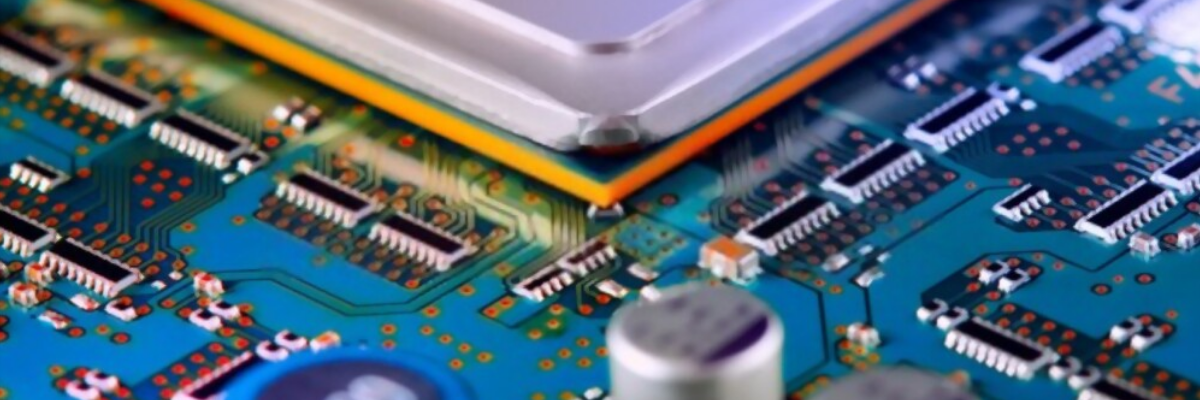Properties to Consider While Selecting PCB Laminate Material

Properties to Consider While Selecting PCB Laminate Material
A PCB laminate is a composed sheet of prepreg that is applied over the PCB by using pressure and temperature. Generally, the sheets of PCB laminate material are accompanied by the copper foils and then are heated and pressurized on both sides to laminate them together. These PCB laminates are also called copper-clad laminates (CCL). The PCB laminate is responsible for the fabrication properties, durability, and performance of a PCB, certainly, its material plays an important role in it. There are various PCB laminate materials used in the industry. However, FR4, High Tg Epoxy, BT Epoxy, and Polyimide are the most popular materials. The material selection is essential to make the PCBs application-centric and efficient. This post offers insights into the chemical, mechanical and thermal, and electrical properties to consider while choosing the PCB laminate material.
Significance of PCB Laminate Material in the PCB Fabrication
PCB laminates build the base for PCBs. These laminates are exposed to mechanical, electrical, chemical, and thermal impacts during operations. Therefore, the factors like scratch resistance, chemical resistance, electric shocks, vibrations, moisture, etc must be taken into consideration. The customization of PCBs is possible according to the application requirement only when you check on the properties of a laminate material. This allows the fabrication of high-quality, high-performance, and durable PCBs.
Properties of PCB Laminate Material for Application-Centric Selection
The properties of PCB laminates are differentiated into 4 categories so that all types of external impacts can be resisted.
Let us discuss these 4 categories and their properties.
Mechanical Properties: The following mechanical properties of laminate material make one of the essential considerations.
-
Peel Strength: The bonding force between the layers of the laminate and copper is called peel strength. The higher the peel strength, the lower is delamination.
-
Flexural Strength: The flexural strength of laminate material is its ability to bend without suffering any cracks, or fractures. This parameter is important for flexible PCBs.
-
Delamination Time: It is the time taken by material layers to delaminate on exposure to external forces. The delamination time is expected to be high for higher durability.
Chemical Properties: The following chemical properties of laminate material are essential considerations.
-
Flame Resistance: Flame resistance of the laminate should be considered if PCBs are exposed to heat application.
-
Moisture Absorption: Moisture absorption by the laminate increases the rate of delamination. A low moisture absorption property of laminate material makes it highly resistant to water and delamination. The PCB laminate materials from 0.01% to 0.2% moisture absorption are considered suitable for PCB fabrication.
-
Methyl Chlorine Resistance (MCR): The chemical tolerance of PCB laminate is high if the material has high methyl chlorine resistance. This means that the chemical absorption of the material is high.
Electrical Properties: The following electrical properties of laminate material are essential considerations.
-
Dielectric Properties: Dielectric constant and dielectric loss tangent of the material are essential considerations under this. If these factors are maintained at the correct range, the material losses on exposure to electric shocks can be prevented.
-
Insulating Properties: These are basically surface and volume resistivity to electricity. This ensures the safety of the PCB on exposure to sudden electric flow.
-
Electric Strength: This is the property that defines the strength of material against electrical breakdown. It should always be high.
Thermal Properties: The following thermal properties of laminate material are essential considerations.
-
Glass Transition Temperature (Tg): The substrate softens and then hardens if exposed to a specific temperature range; this is called the glass transition phenomenon. The glass transition temperature is the sensitive temperature range between which the glass transition occurs.
-
Thermal Expansion: The laminate expands beyond a certain temperature. However, the PCB laminate material with low thermal expansion should be chosen to prevent dimensional changes and thermal stresses in the PCB.
-
Thermal Conductivity: The thermal conductivity of the material layer should be high so that adequate heat distribution takes place.
-
Decomposition Temperature: The substrate material is susceptible to decomposition if exposed to a temperature higher than a threshold. The temperature at which the decomposition begins should be avoided and therefore is an important selection property.
Now that all factors for the selection of PCB laminate material are discussed, it is important to source your PCB fabrication and assembly from an experienced manufacturer to assure quality. This is why sourcing PCB production services from highly experienced, and quality-focused contract PCB manufacturers like Twisted Traces can be beneficial. The company has been catering to several industries offering quality PCB fabrication services. Experts at the company will help you make the right selection of PCB laminate material by analyzing the properties of FR4, High Tg Epoxy, BT Epoxy, and Polyimide materials.
.png)



.png)
